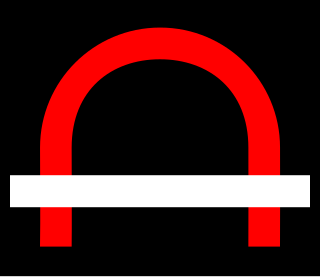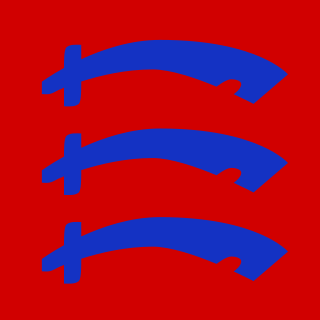
The Liverpool Rifles was a unit of the Territorial Army, part of the British Army, formed in Lancashire as a 'Rifle Volunteer Corps' (RVC) in 1859, becoming a battalion of the King's Regiment (Liverpool) in 1881. It saw action on the Western Front in the First World War and later became a searchlight unit of the Royal Artillery in the Second World War.

The 57th Division was an infantry formation of the Territorial Force created in 1914 as part of the massive expansion of the British Army during the First World War. It served on the Western Front during 1917 and 1918. The divisional number was reactivated for deception purposes during the Second World War.
The 166th Brigade was an infantry brigade of the British Army that saw active service in the First World War and remained in the United Kingdom throughout the Second World War.

The 140th Brigade was an infantry brigade formation of the British Army's Territorial Army (TA) that had its origins in a South London Brigade of the former Volunteer Force. It served on the Western Front in the First World War and was recreated during the Second World War where it served only in the United Kingdom as a training formation.

The 141st Brigade was an infantry brigade of the Territorial Army, part of the British Army, that served in the First World War and remained in the United Kingdom throughout the Second World War.
The 142nd Brigade was an infantry brigade of the Territorial Army, part of the British Army, that served in the First and the Second World Wars, and remained in the United Kingdom throughout the latter.
The 214th Brigade was an infantry formation of the British Army during World War I. It was raised as a second line brigade of the Territorial Force and initially assigned to the 71st Division for coast defence. Later it was reorganised as an all-arms brigade group for service in North Russia, but this was cancelled and it was reassigned to the 67th Division, a training and home defence formation, until the end of the war.
The 206th Brigade was a formation of the British Army during World War I. It was raised as a 2nd-Line duplicate of the Essex Brigade of the Territorial Force and formed part of the 69th Division. It served as a training formation in the United Kingdom without going overseas.
The 213th Brigade was a Home Defence and training formation of the British Army during both the First and Second World Wars.
170th Brigade was a 2nd-Line infantry formation of the British Territorial Force raised during the First World War that served on the Western Front. The brigade's number was also used for deception purposes during the Second World War.
171st Brigade was a 2nd-Line infantry formation of the British Territorial Force raised during the First World War that served on the Western Front. The brigade's number was also used for deception purposes during the Second World War.
The 222nd Infantry Brigade was a Home Service formation of the British Army that existed under various short-lived titles in both the First and Second World Wars
The 226th Infantry Brigade was a Home Service formation of the British Army that existed under various short-lived titles in both World War I and World War II.

The 223rd Brigade was a Home Defence formation of the British Army in the First and the Second World Wars. It existed under several variations of the 223 Brigade title, and was eventually converted into an airborne formation.
The 224th Brigade was a Home Defence formation of the British Army in World War I and World War II. It existed under several variations of the 224th Brigade title.
71st Division was a short-lived infantry division of the British Army during the First World War. It served in the Home Defence forces and never went overseas.
72nd Division was a short-lived infantry division of the British Army during World War I. It served in the Home Defence forces and never went overseas.
73rd Division was a short-lived infantry division of the British Army during World War I. It served in Home Forces and never went overseas.
The Preston Rifles, later the 4th Battalion, Loyal North Lancashire Regiment, was a volunteer unit of the British Army from 1859 until the 1950s. It served as infantry on the Western Front and in Ireland during the First World War, and as an air defence unit during The Blitz and the campaign in North West Europe during the Second World War.
The Bolton Rifles, later the 5th Battalion, Loyal North Lancashire Regiment, was a volunteer unit of the British Army from 1859 until 1967. It served on the Western Front during the First World War, and in the Far East during the Second World War, when one battalion was captured at the Fall of Singapore.


